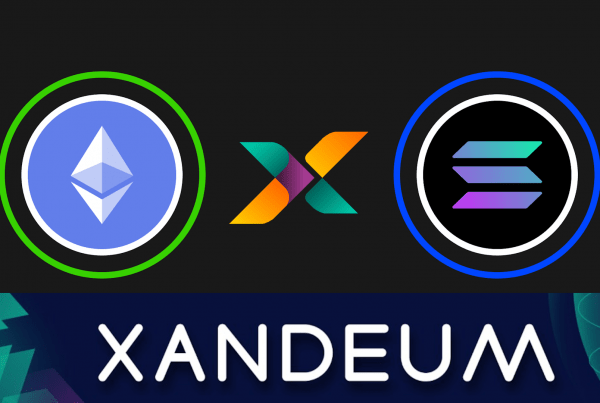
Do Kwon’s net worth could be $180 million or above, if we take into account the BTC that was held in a wallet belonging to the Luna Foundation Guard and 18 million in USDC which was swapped into various other cryptocurrencies. However, it’s unclear if Do Kwon is still in control of these funds.
While it’s possible that Do Kwon has lost access to the majority of his wealth, there’s also a possibility that his net worth could be even higher, as he was a prominent player in the cryptocurrency industry and was involved with many different cryptocurrency projects.
Since transactions on a blockchain are not necessarily tied to a real-world identity, it’s possible that Do Kwon has cryptocurrency wallets that nobody has been able to link to him yet.
Before we dive deeper into the topic of Do Kwon’s net worth, let’s first learn a little bit about this controversial figure and his fall from grace.
Who is Terra founder Do Kwon?

Do Kwon is a South Korean entrepreneur who rose to fame after founding Terra, a blockchain project that provided a platform where users could mint stablecoins tied to various fiat currencies.
The tokens in the Terra ecosystem reached a total valuation of about $60 billion, and its main tokens LUNA and UST were among the biggest crypto assets by market capitalization. In 2022, however, the system that was supposed to maintain their value suddenly spiraled out of control and the tokens became close to worthless.
Do Kwon was born in South Korea’s capital Seoul in 1991. However, he went to college at the prestigious US-based Stanford University, where he earned a BS in computer science. After a brief stint as a software engineer at tech giants Microsoft and Apple, Do Kwon founded a startup called Anyfi, which developed a peer-to-peer communications network.
Terraform Labs and the Terra blockchain
In 2018, Do Kwon founded Terraform Labs alongside fellow entrepreneur Daniel Shin. Terraform Labs developed the Terra blockchain platform, which implemented a token called LUNA, which could be burned to mint stablecoins pegged to various fiat currencies.
Unlike most stablecoins, which are backed by reserves, Terra implemented an algorithmic system in which the supply of its stablecoins fluctuated based on supply and demand.
Here’s a quick overview of how the Terra platform functioned, using the US dollar-pegged UST as an example. The Terra platform offered a mechanism that allowed users to exchange $1 worth of LUNA tokens for the creation of 1 UST through a process called burning. Similarly, users could burn 1 UST to obtain LUNA tokens worth $1.
The Terra platform also had similar stablecoins based on other currencies such as the euro and the South Korean won, although UST was the largest by far.
What happened to Terra?
Terra functioned well for a while and attracted a large number of users in addition to a huge amount of capital. Numerous projects built applications on the Terra blockchain. For example, the Mirror project allowed users to trade synthetic versions of stocks and commodities directly on the blockchain, while the Anchor protocol allowed users to earn yield by lending out their Terra-based stablecoins.
Anchor was the main driver of Terra’s growth, as it offered very high yields on UST deposits. At points, users were earning as much as 20% APY. This attractive yield led to a large number of UST being minted, as it was perceived as a safe way to make very solid returns. At the peak of Terra’s success, there were $18.7 billion worth of UST tokens in circulation.
Even though Do Kwon and his team made attempts to provide a backstop in case the UST stablecoin would drop below its $1 price target, the system turned out to be too large to control.
In February 2022, approximately three months prior to the collapse of the Terra ecosystem, the Luna Foundation Guard announced the UST Reserve. This reserve was designed to hold different assets, such as Bitcoin, and its purpose was to safeguard the UST peg in case it faced substantial pressure. Despite the reserve eventually reaching a size of around $3.5 billion, it proved insufficient to prevent a complete downfall of UST.
In May of 2022, the UST price started to slip below $1. It’s still unclear exactly what triggered this price drop, but it’s possible that a sophisticated market participant identified that the arbitrage mechanism that was meant to keep the stablecoin’s price stable was more vulnerable than the market expected and accumulated a significant short position against UST.
As UST began sliding below $1, panic began to spread among holders and a large number of users rushed to the exits. Many of them burned their UST to mint LUNA, which eventually spiraled into a hyperinflationary scenario for the LUNA token. The end result was that both UST and LUNA lost the vast majority of their value in less than a week.

The aftermath of Terra’s collapse
After the Terra ecosystem collapsed, the community essentially split into two parts. One part of the community launched a new blockchain called Terra 2.0, which removed the algorithmic stablecoin mechanism that led to the platform’s demise. The other part of the community decided to continue on the same platform under the name Terra Classsic.
The collapse of Terra led to losses measured in the tens of billions of dollars. Authorities in both South Korea and the United States are seeking to extradite Do Kwon. In South Korea, Kwon is being accused of fraud and violating the country’s markets law. Meanwhile, U.S. authorities are looking to prosecute Do Kwon for various crimes including wire fraud, securities fraud, commodities fraud and others.
What was Do Kwon’s net worth before the crash?
Prior to the downfall of Terra, it was reported that the Luna Foundation Guard (LFG), a nonprofit organization established to ensure the stability of the UST peg and promote the growth of the Terra ecosystem, emerged as one of the largest owners of Bitcoin. They acquired over 80,000 BTC, equivalent to 0.4% of the total Bitcoin supply.
Currently, there are suspicions that Do Kwon may have been in possession of LFG’s wallet all along. Taking into consideration the average price of Bitcoin in early 2022, this would imply that Do Kwon’s net worth before the Terra crash was approximately $3 billion. It is important to note that this calculation does not include his other holdings and investments.
Additionally, reports have surfaced regarding allegations that one of the co-founders of Terraform Labs maintained shadow wallets containing LUNA tokens valued at over $200 million. However, the accuracy of these claims regarding the shadow wallets has not yet been verified.
When discussing Do Kwon’s net worth before the crash, it is worth mentioning that Do Kwon himself acknowledged his significant wealth in early 2022, stating that he was a billionaire when the LUNA token was trading at around $100.
What is Do Kwon’s net worth in 2023?
It’s extremely difficult to estimate Do Kwon’s net worth in 2023, although we might get a better idea in the future if he goes through trial in South Korea or the United States, both of which are seeking to extradite him. At the time of writing this article, Do Kwon is currently serving a 4-month prison sentence in Montenegro for forging travel documents.
Hansung University researcher Cho Jae-Woo has recently identified a transaction of around 18 million USDC from a wallet that is thought to belong to Do Kwon. The transaction happened while Do Kwon was already serving his sentence, which means he likely handed over his private keys to someone who is now making transactions on his behalf.
The 18 million USDC tokens were then swapped through multiple transactions into a variety of other crypto assets, including wBTC, ETH, stETH, DAI and others. Notably, these tokens cannot be frozen, unlike USDC, which can be frozen by its issuer Circle.
Interestingly, these transactions happened on the same day when almost 5,300 BTC (worth about $160 million at the time) was transferred from a wallet that belongs to the Luna Foundation Guard. It’s impossible to prove at this time whether the USDC transactions and this transaction were are related, although it’s likely not a coincidence.
If we assume that the 5,300 BTC was sent to a wallet that’s also under Do Kwon’s control, and assume the same for the transactions involving 18 million USDC, his net worth could be around $180 million. However, it’s possible that Do Kwon no longer has control over these cryptocurrency wallets.
Do Kwon also spread his wealth into other types of assets and not just crypto. South Korean authorities seized over $170 million worth of Do Kwon’s assets in May of 2023. These assets included real estate, money deposits, cryptocurrency deposits on South Korean cryptocurrency exchanges, securities, and a luxury car.
The bottom line
Do Kwon’s net worth could still be significant, depending on how much cryptocurrency he is able to access at the moment. However, he is still not in an enviable position, as he is currently serving a prison sentence in Montenegro and facing prosecution in both South Korea and the United States.
At the peak of the Terra ecosystem, it’s very likely that Do Kwon was a billionaire. He had significant LUNA holdings and the Luna Foundation Guard accumulated a massive amount of Bitcoin.



